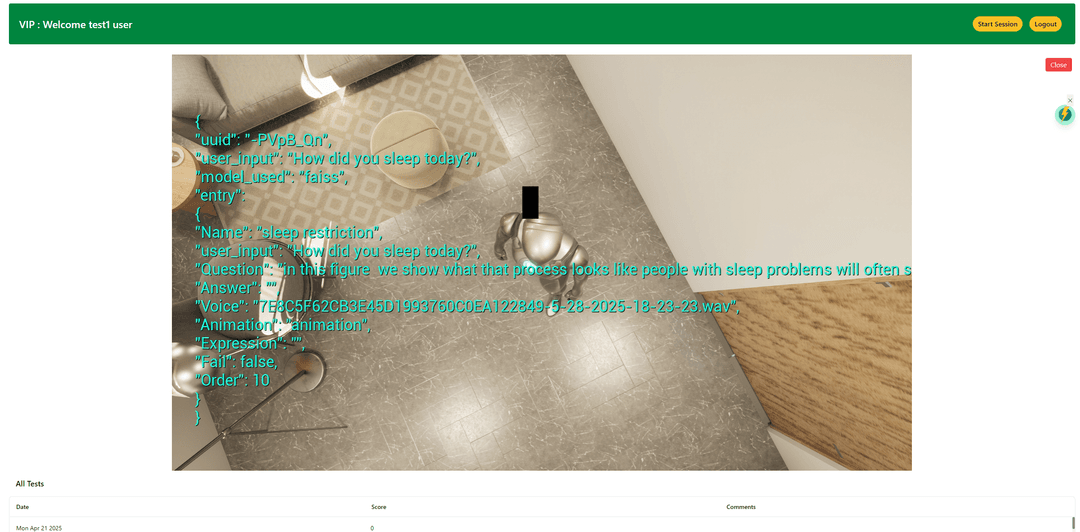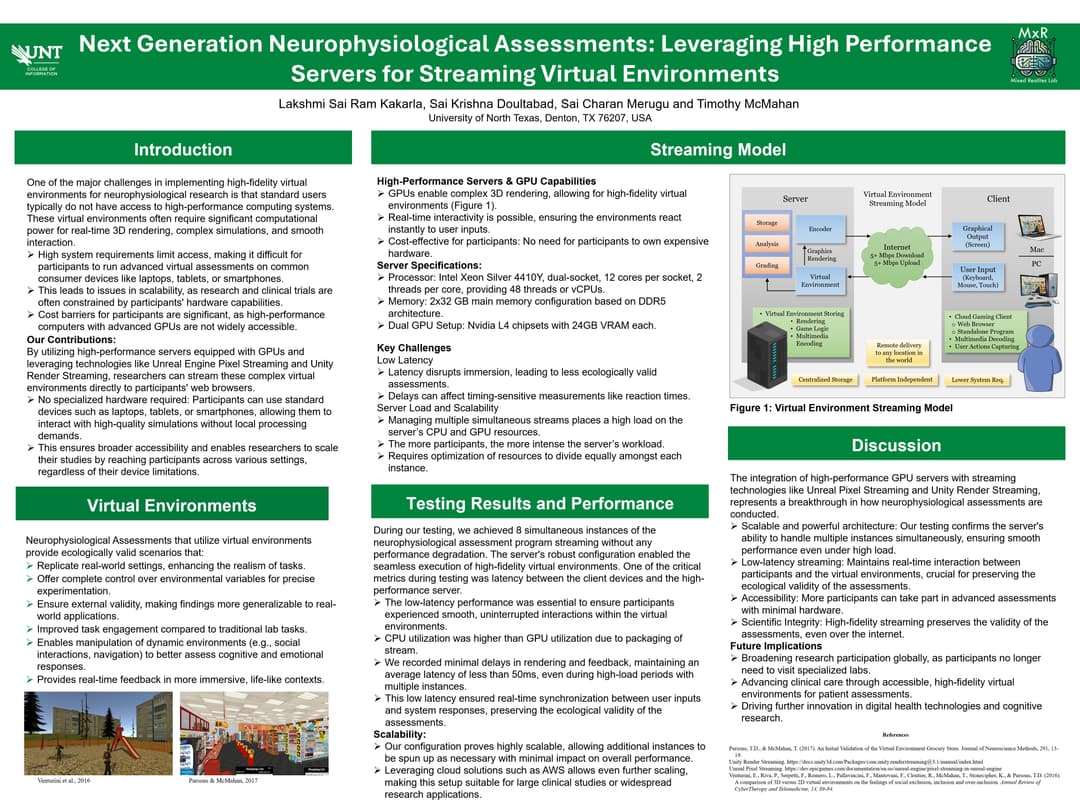About
My journey began with building machine learning–based recommendation,and optimizing database systems, which sparked my passion for developing intelligent, data-driven applications. Over the past 3+ years, I’ve evolved into a versatile AI and Data Engineer, designing everything from predictive models and NLP systems to scalable backend services and real-time analytics platforms.
Work Experience
Skills
Check out my latest work
I've worked on a variety of projects, from simple websites to complex web applications. Here are a few of my favorites.
AI Code Review Agent
With the release of the OpenAI GPT Store, I decided to build a modern web application built with Next.js and Convex for AI-powered code review. This project demonstrates the integration of AI capabilities to assist in code review processes, providing automated analysis and suggestions for code improvements.

Virtual Human Platform
Designed and developed AI-integrated Virtual Human Platform research at the University of North Texas, focusing on developing and deploying intelligent systems for cognitive and behavioral analysis. Engineered VR-based simulations for neuropsychological evaluation, processed multimodal data (e.g., EEG, eye-tracking, voice), and integrated Natural Language Processing (NLP) for automated scoring and insight generation. Collaborated on experimental design, statistical modeling, and human-subject studies involving real-time AI feedback and Human-Computer Interaction (HCI) optimization.
Check out my latest work
I've worked on a variety of Research projects, from simple websites to complex Real World applications. Here are a few of my favorites.

Next Generation Neurophysiological Assessments: Leveraging High Performance Servers for Streaming Virtual Environments
Next-Gen AI-Driven Neurophysiological Assessments Using Cloud-Streamed Virtual Environments Pioneered the integration of GPU-powered high-performance servers to stream immersive 3D virtual environments for real-time neurophysiological assessments. Leveraged Unreal Engine’s Pixel Streaming and Unity’s Render Streaming to deliver ecologically valid simulations directly via web browsers—eliminating the need for local high-end hardware and expanding clinical accessibility. Engineered a low-latency, high-fidelity system architecture capable of synchronizing biometric data (EEG, HRV, eye-tracking) with dynamic virtual tasks, ensuring scientific precision. Deployed scalable solutions on AWS, enabling secure, remote diagnostics and cognitive evaluations across diverse populations. This work underscores the transformative role of AI and cloud infrastructure in modernizing digital health and advancing brain-behavior research.

Deep Neural Approaches for Early Detection of Apple Foliar Disorders
Built a machine learning pipeline to automate the detection of foliar diseases in apple trees, reducing reliance on time-consuming expert inspections and biological tests. Employed OpenCV (cv2) for preprocessing, including image resizing, grayscale conversion, and normalization to standardize input data. Implemented a custom Convolutional Neural Network (CNN) that achieved 93% classification accuracy on biotic and abiotic stressors affecting apple foliage. Benchmarked model performance against pretrained architectures—InceptionV3 (92%), VGG16 (62%), and VGG19 (63%)—highlighting the effectiveness of custom deep models for domain-specific disease detection. This AI-driven solution enhances early intervention capabilities and supports scalable, precision agriculture practices.
I like building things
During my time in university, I attended 5+ hackathons. People from around the country would come together and build incredible things in 2-3 days. It was eye-opening to see the endless possibilities brought to life by a group of motivated and passionate individuals.
- G
GradInnoHack
UNT, Denton, TX
Developed an AI-powered web app where an MCP (Multi-Component Pipeline) server coordinates custom agents for user profiling, article retrieval from Convex DB, and viewpoint contrast using Hugging Face Transformers. Users enter biographical info and a topic, and receive a curated article set plus an AI-generated summary comparing their inferred perspective with an opposing view. - T
Tidal Hackathon
Texas A&M University, College Station, TX
Built a Streamlit app with responsive styling for multiple pages ML Model: trained cloud model using vertex AI Deployment: Model deployed on Vertex AI and integrated via REST Data: Earth Engine API + GLDAS + Sentinel-2 for fetching NDVI, temperature, humidity Storage: Google Cloud Storage used to archive weather reports Email: Custom SMTP system that emails reports to authenticated users Auth: Lightweight Google SSO login via session control - H
Hacklahoma
Oklahoma City, Oklahoma
Developed a secure, AI-powered crypto trading platform featuring a real-time Streamlit dashboard, with a Flask/FastAPI backend integrated with Web3.py for Ethereum transactions. User activities and transactions were stored in MongoDB, while machine learning models handled market trend prediction and fraud detection. Security was reinforced through private key encryption and multi-factor authentication. - H
Hack UTD
UTD, Dallas, TX
Hydrate Event Predictor is a machine learning-driven solution designed to detect and predict hydrate formations in gas pipelines using time-series sensor data. By analyzing key metrics such as Volume Deviation and Valve Efficiency, the tool leverages LSTM neural networks to anticipate hydrate events before they escalate. Built with FastAPI and powered by Python, Pandas, and MongoDB, it offers real-time visualization for quick decision-making and employs techniques to handle imbalanced datasets, ensuring reliable predictions across both real and simulated pipeline data. - H
Hack UNT
UNT, Denton, TX
Developed NutriSmart, an AI-powered 7-day meal planner that simplifies healthy eating by generating personalized meal plans based on users’ health goals, dietary needs, and favorite ingredients. I integrated OpenAI’s GPT-3.5 for intelligent meal generation, built the backend using Node.js, and used MongoDB Atlas to store user preferences securely. The front end was developed with HTML, CSS, and JavaScript to provide a clean, user-friendly interface. I implemented JWT-based authentication for secure login after pivoting from OAuth integration. One of the biggest challenges I tackled was fine-tuning the AI to create balanced and goal-specific meal plans while adapting to diverse dietary preferences. NutriSmart is designed to scale and evolve into a full digital nutrition assistant, with future features like mobile support, condition-specific goals (e.g., diabetes, heart health), and wearable integration for real-time meal adaptation.
Get in Touch
Want to chat? Just shoot me a dm email and I'll respond whenever I can. I will ignore all soliciting.